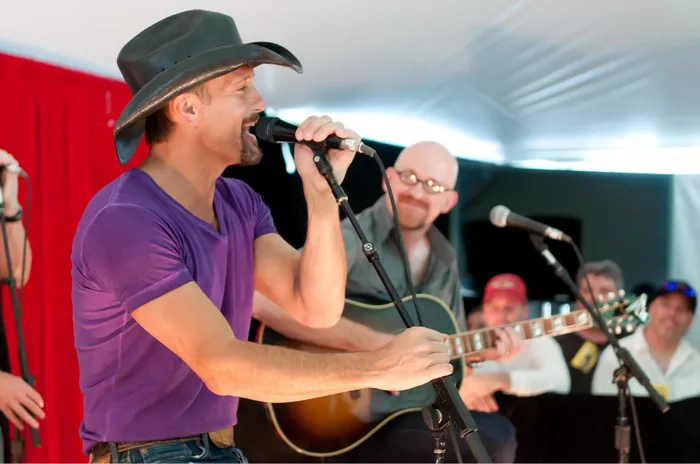In the vast landscape of musical genres, there exists a captivating intersection where the haunting melodies of gothic aesthetics merge seamlessly with the timeless traditions of country music. This peculiar fusion gives rise to a genre that is as enigmatic as it is evocative – Gothic Country Music. A genre that, despite its apparent contradictions, manages to create a hauntingly beautiful musical tapestry that resonates with those who appreciate the unconventional and the mysterious.
Unearthing the Roots
To understand the essence of Gothic Country Music, one must delve into the roots of both gothic and country genres. Country music, with its origins deeply embedded in the rural landscapes of the American South, is often associated with themes of love, loss, and the simple yet profound aspects of life. On the other hand, gothic music, which emerged as a subculture in the late 1970s, is characterized by its dark, atmospheric soundscapes and themes of the macabre.
The genesis of Gothic Country Music can be traced back to the mid-20th century, where artists began experimenting with a blend of folk, blues, and gothic elements. Pioneers like Johnny Cash and Hank Williams laid the groundwork by infusing their traditional country tunes with darker, introspective lyrics. This subtle infusion of gothic sensibilities into the country narrative set the stage for a genre that would continue to evolve and captivate audiences in unexpected ways.
Melancholic Melodies and Haunting Harmonies
One of the defining features of Gothic Country Music lies in its ability to evoke a sense of melancholy and unease through its melodies and harmonies. The use of minor chords and dissonant arrangements creates an atmosphere that is both haunting and alluring. The somber tones of traditional country instruments, such as the fiddle and pedal steel guitar, blend seamlessly with the eerie soundscape of gothic elements like synthesizers and atmospheric effects.
Artists within the genre often draw inspiration from gothic literature, folklore, and the supernatural, infusing their lyrics with themes of ghosts, death, and existential reflections. The result is a unique sonic experience that transports listeners to a realm where the mundane and the mysterious coexist.
The Storytelling Tradition
At the heart of country music lies a rich tradition of storytelling, where artists use their lyrics to narrate tales of heartache, resilience, and the human experience. Gothic Country Music embraces and extends this tradition by delving into darker, more mysterious narratives. Songs become immersive stories that explore the shadows of the human psyche, often blurring the lines between reality and the supernatural.
The storytelling aspect of Gothic Country Music allows artists to craft intricate and emotionally charged narratives. Themes of haunted landscapes, forbidden love, and encounters with the supernatural are woven into the fabric of the genre, creating a musical experience that goes beyond mere entertainment, transcending into a realm of storytelling that resonates on a visceral level.
The Gothic Country Aesthetic
Beyond the music itself, Gothic Country has cultivated a distinct aesthetic that complements its sound. Album artwork often features haunting imagery, reminiscent of gothic architecture, abandoned landscapes, and the mysterious allure of the supernatural. This visual component enhances the overall experience, immersing the audience in a complete sensory journey that goes beyond the auditory realm.
Artists within the genre often embrace a gothic-inspired fashion sense, combining traditional country attire with dark, gothic elements. This fusion of styles serves as a visual representation of the genre’s duality, marrying the rural charm of country with the mysterious allure of gothic sensibilities.
Influential Artists in the Gothic Country Landscape
As Gothic Country Music continues to evolve, several artists have emerged as influential figures, shaping the landscape of this unique genre. One such artist is The Handsome Family, whose poetic lyricism and atmospheric soundscapes have garnered widespread acclaim. Their album “Through the Trees” stands as a seminal work within the genre, exploring themes of nature, death, and the uncanny.
Another notable figure in the Gothic Country scene is 16 Horsepower, a band known for infusing their music with a raw, primal energy. Their album “Sackcloth ‘n’ Ashes” is a testament to the genre’s ability to explore the darker facets of the human experience while maintaining a connection to its country roots.
The Resurgence and Modern Evolution
In recent years, Gothic Country Music has experienced a resurgence, with a new wave of artists bringing fresh perspectives to the genre. Bands like Those Poor Bastards and The Builders and the Butchers have embraced the traditional elements of Gothic Country while pushing the boundaries with experimental sounds and contemporary production techniques.
The modern evolution of Gothic Country Music reflects a broader trend within the music industry, where artists increasingly embrace eclecticism and defy genre boundaries. This willingness to experiment and blend influences has resulted in a diverse and dynamic Gothic Country landscape that continues to attract a growing fan base.
Conclusion
The allure of Gothic Country Music lies in its ability to offer a unique and immersive experience that transcends the boundaries of conventional genres. The genre’s fusion of gothic and country elements creates a rich tapestry of sound and narrative that resonates with listeners seeking a departure from the mainstream.
Gothic Country serves as a testament to the enduring power of musical exploration and innovation. By embracing the shadows and delving into the mysterious, artists within this genre have carved out a niche that speaks to the complexity of the human experience. As Gothic Country Music continues to evolve and captivate audiences, it stands as a testament to the timeless nature of musical expression and the boundless possibilities that arise when seemingly disparate genres converge.

